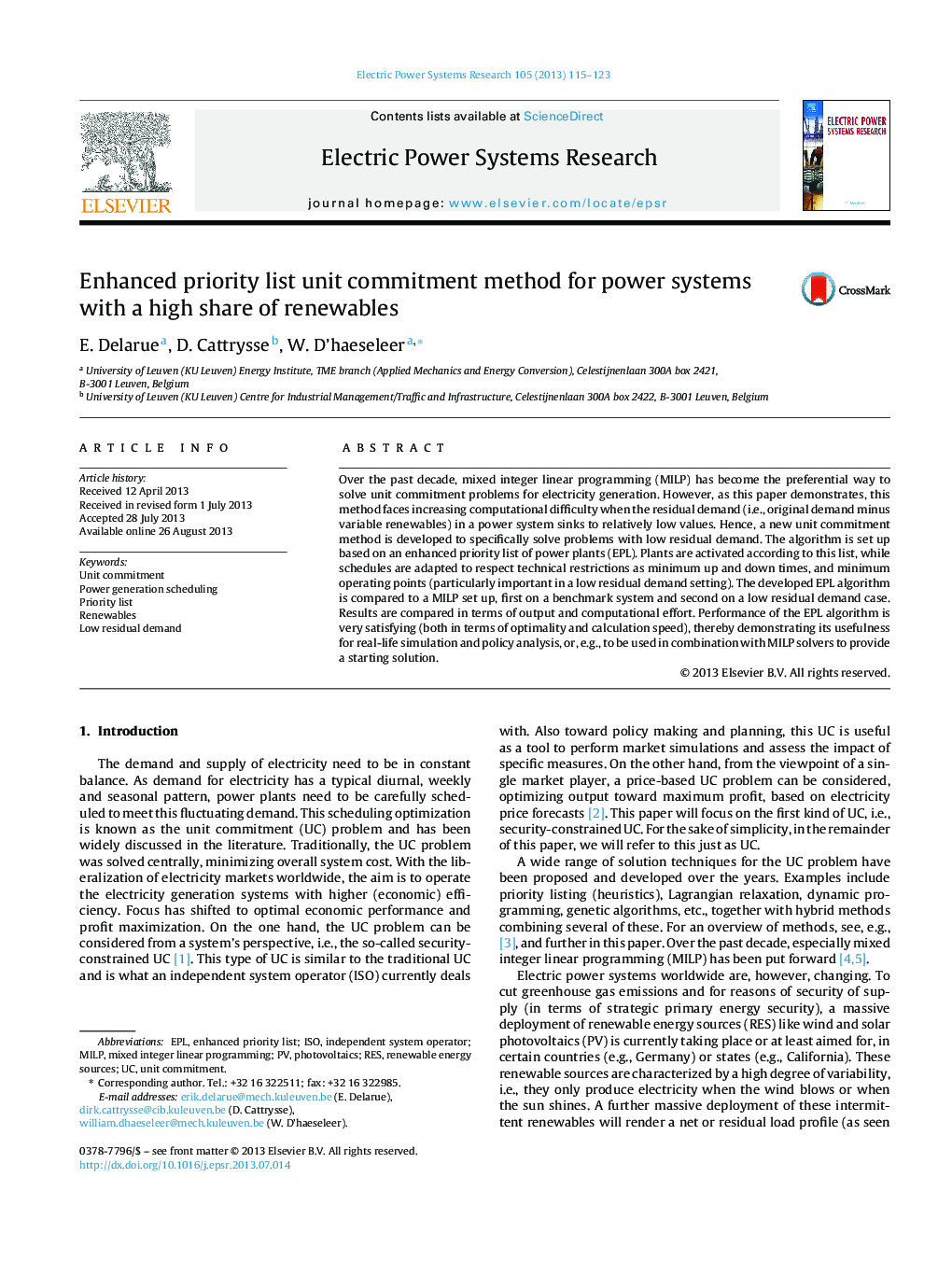| کد مقاله | کد نشریه | سال انتشار | مقاله انگلیسی | نسخه تمام متن |
|---|---|---|---|---|
| 703787 | 1460908 | 2013 | 9 صفحه PDF | دانلود رایگان |

• Increasing renewables reduce “residual demand” to be met by conventional power plants.
• MILP faces computational difficulties for low load UC problems.
• New EPL method is developed specifically for low load UC.
• The EPL method proves to be fast, accurate and close to optimal.
Over the past decade, mixed integer linear programming (MILP) has become the preferential way to solve unit commitment problems for electricity generation. However, as this paper demonstrates, this method faces increasing computational difficulty when the residual demand (i.e., original demand minus variable renewables) in a power system sinks to relatively low values. Hence, a new unit commitment method is developed to specifically solve problems with low residual demand. The algorithm is set up based on an enhanced priority list of power plants (EPL). Plants are activated according to this list, while schedules are adapted to respect technical restrictions as minimum up and down times, and minimum operating points (particularly important in a low residual demand setting). The developed EPL algorithm is compared to a MILP set up, first on a benchmark system and second on a low residual demand case. Results are compared in terms of output and computational effort. Performance of the EPL algorithm is very satisfying (both in terms of optimality and calculation speed), thereby demonstrating its usefulness for real-life simulation and policy analysis, or, e.g., to be used in combination with MILP solvers to provide a starting solution.
Journal: Electric Power Systems Research - Volume 105, December 2013, Pages 115–123